Andhra Pradesh
Andhra Pradesh situated in the southern part of India is the fifth largest state and was formed on 1st November 1956. It has longest coast line (972 km) amongst all states in India. The state is bounded by Tamil Nadu in the south, Karnataka and Maharashtra in west and Chhattisgarh and Odisha in the north.
It has a rich tradition of arts and crafts. Kalamkari, a traditional textile art form, is popular in the region, known for its intricate hand-painted designs. The region is also known for the production of exquisite Kondapalli toys, Banjara embroidery, and Bidriware, a metalwork craft
Lepakshi Nandi Temple is one of the main attractions in Lepakshi and a well-known landmark for the tourism of Lepakshi. It was built during Vijayanagara period when the main Veerabhadra Temple was built. The Lepakshi Nandi is made out of single granite. The monolithic Nandi sculpture is said to be the second largest monolithic structure in India after Gomateshwara in Shravanabelagola. It is 20 feet in height and 30 feet in length. The Nandi statue is decorated with a necklace, muvvalahara, a bell chain with small horns. It is noticeable that the head of the bull is held aloft at a higher angle than usual. In addition, the expression of submission, which is typical of Nandi before Shiva, is not seen in the statue here. This big granite bull is situated on the main road beside AP Tourism Haritha resort. It has been positioned such that it faces the 18 ft Nagalinga in Veerabhadra Temple Complex.
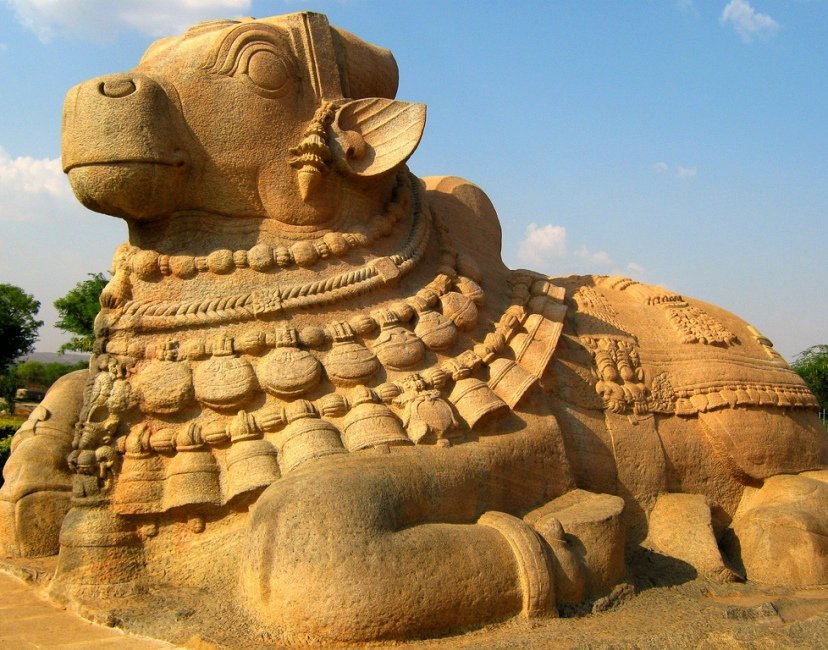

Amaravati At a distance of 1 km from Amaravati Bus Station, Amaravati Stupa is a ruined Buddhist monument located in Amaravati, Andhra Pradesh. Popularly known as Mahachaitya or Great Stupa of Amaravati, it is one of the largest stupas in India and among the must visit places in Amaravati.
The great Buddhist Stupa or Mahachaitya of Amaravati is one of the greatest architectural achievements of ancient India. It was founded in the 3rd-2nd centuries BC during Ashoka Maurya’ reign and enlarged in the 1st-4th centuries AD
Also known as Deepaladinne, the great stupa at Amaravati was one of the biggest in Andhra Pradesh with a probable diameter of 50 m and a height of 27 m. It has a brick built circular vedika or drum with projecting rectangular Ayaka platforms in four cardinal directions. Five Ayaka pillars must have stood on each platform symbolically representing the five main events in Buddha’s life viz., the birth, the great renunciation, the enlightenment, the first sermon and the final extinction. The drum and Ayaka platforms were covered with sculptured slabs. All the four-Ayaka platforms have yielded seven crystal and one Ivory relic caskets, some of which contain bone-pieces, pearls, precious stones and gold flowers. This is a Sariraka type of stupa and hence it has a great importance.
A hemispherical dome is mounted on the circular drum. Tall sculptured dome slabs covered the vertical part of the dome, above which came decorations in stucco. Scenes from the life of Buddha, Jataka stories, animal motifs, and floral decorations formed the subject matter of these sculptures carved on the locally available light green limestone. The drum was crowned by a harmika or box like structure over which stood a chhatra or umbrella.
It was surrounded by a great railing made of tall pillars separated by crossbars and crowned by a high decorated coping.
Undavalli Caves carved out of a single sandstone, are a prime example of India’s rock-cut architectural heritage. The inviting design of the caves speaks volumes about the advanced architectural skills of the ancient Viswakarma architects and temple builders. The caves are said to have been associated with the influential Vishnukundina dynasty, which ruled over important parts of India between 420 AD and 620 AD. These caves are a fine specimen of Gupta architecture as well, and the detailed design on the second floor reflects Chalukyan architecture. The largest cave has four floors and houses a huge statue of Lord Vishnu in a reclining posture. It is said that this sculpture was carved out of a single block of granite. The first storey of the caves houses sculptures of Jain tirthankaras (saints) that suggest that they once served as a home for Jain monks. The walls on the first floor are covered with stunning frescoes that depict scenes from mythological stories. The facade of the third floor hosts numerous sculptures that include depictions of lions and elephants. Nearby is another unique cave dedicated to Lord Brahma, Lord Vishnu and Lord Shiva.


Borra Caves : One of the largest caves in the country, Borra Caves are home to million-year-old stalactite and stalagmite formations. Perched at an elevation of 1,400 m above sea level, the majestic caves are a visual treat for visitors. They came into existence as a result of the flow of Gosthani river on the limestone deposits in the area. Some of the imposing stalactite and stalagmite formations that can be seen here include those of Lord Shiva and his consort Goddess Parvati, a mother and her child, a crocodile, a human brain and a tiger. These caves were discovered by William King George of the Geological Survey of India. Legend has it that Borra Caves was first discovered when a cowherd, while searching for one of his lost cows, accidentally came across them. There he found a shivling deep inside the cave, along with his cow. He believed that Lord Shiva had saved his cow. Later, villagers built a small temple just outside the caves. Borra Caves draw tourists from all across the country and are worth marking on the itinerary.
Gandikota one of the most stunning geological formations in India. Situated on the banks of the Penner river, Gandikota derives its name from two Telugu words, ‘Gandi’ meaning a gorge. ‘Kota’ meaning a fort.
An ancient grant suggests that Kapa, the king of the neighboring village of Bomanapalli, built a fortress in Gandikota. Harihara, the first emperor of the Vijayanagara dynasty, is believed to have constructed a temple here. However, the 16th-century Persian historian Firishta claimed that the fort was built in 1589. It was captured by the Qutab Shahis and presided over by Mir Jumla in the 17th century. Jumla built the Juma Masjid and enlarged the fortifications. The citadel later passed into the hands of Nawab of Kadapa and then, Hyder Ali. In 1800CE, following the treaty with the Nizam, the British gained control over the fort.

The best time to visit Andhra Pradesh for tourism is winter, from November to February. During these months, the weather is . The cool days and cooler nights make it a good time to explore the state without being hindered by heat or rain
Andhra Pradesh Tourism
The 4th largest State in India is well known for its rich natural resources, temples and rivers. The rich cultural heritage & the ancient architecture of the places attracts tourist to visit Andhra Pradesh. One must have to visit Tirupati, Vijayawada, Nellore & capital city Hyderabad.

TIRUPATI
Tirupati, an ancient city in Andhra Pradesh is famous for its temples, which are frequented by people from all parts of India. If you plan a pilgrimage, Tirupati could be a great destination. Its century-old temples are famous among pilgrims. The Tirumala Hills in Tirupati is the second oldest rock mountains in the world. Though you have many places to visit in Tirupati, here are 8 important places to visit in Tirupati that would make you feel you have indeed toured the famous pilgrim center.
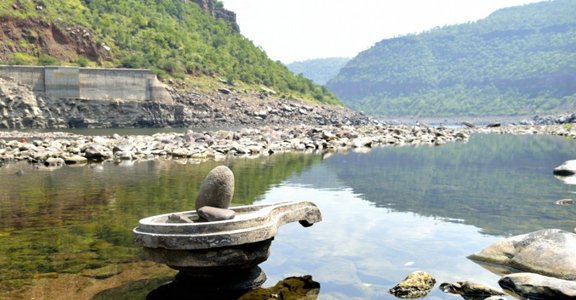
SRISAILAM
The holy town of Srisailam is located on top of the Nallamala Hills in Kurnool District. It is situated on the banks of Krishna River, about 212 kilometers south of Hyderabad. Because of its forest sanctuary, the town is a popular weekend getaway destination. However, it also is known for its Shiva shrine. Bhramaramba Mallikarjunaswamy Temple, which is dedicated to Mallikarjuna Swamy, is located in Srisailam.

Araku Valley
Araku Valley is a comparatively unexplored hill station mostly visited by locals as a weekend getaway and is situated some 120 kilometres away from Vishakhapatnam. If you’re a tourist looking for exclusivity and tranquillity, Vistadome train leaves Vishakhapatnam at 6.50 AM, making way through 58 tunnels and passing over 84 bridges making way through the breathtaking landscape to reach Araku in approximately in 5 hours, go, catch that! Located in the gentle hills of Eastern Ghats, Araku Valley is also home to a number of tribes as well. This valley is also home to a few tribal caves and the Museum of Tribal Arts, which are an experience in their own right. This destination is quite famous for its exquisite coffee, whose subtle aroma will have you craving for a cuppa. In addition to being a beautiful vista point, you can also try your hand at a number of adventure sports here, which include trekking and swimming as well. If a holiday to the hills is your call but you think you’ve seen it all, maybe you should to wait till you visit this one.

AMARAVATHI
Amaravathi is renowned for being a site of a Buddhist Stupa that is a semi-hemispherical structure containing Buddhist relics and often called the Abode of God. Amaravati is a prime hub of pilgrimage and sightseeing. The original structure was established during the reign of Emperor Ashoka which is now a meditation site in the city.

GANDIKOTA
Endearingly known as the ‘Grand Canyon of India’, Gandikota is a small and quaint village in the Kadapa district of Andhra Pradesh. Flanked by River Pennar on the right side, the village is famous for the spectacular gorges formed by the river cutting through Erramala Hills. The narrow valleys with streams running between them and the steep rocky walls are reminiscent of the renowned Grand Canyon in Arizona.

Visakhapatnam
Visakhapatnam, also commonly known as Vizag, is one of the oldest port cities in the country. Situated in the heart of Andhra Pradesh.Vizag is dotted with many beaches along its coastline, with the most famous one being the Yarada Beach. One of the most stunning places to see in all of Visakhapatnam, Yarada beach is surrounded by majestic hills on three sides, and by the Bay of Bengal on the other side. One of the best things about Vizag’s beaches is that they are a lot cleaner and a lot less crowded than other famous beaches along the Indian coastline, and Yarada beach is no exception. It is the perfect place to sit back on the golden sands and witness a marvellous sunrise or sunset.

VIJAYAWADA (vizag)
Vijayawada is the second-largest populated city in the state. It is also home to numerous caves and rock-cut temples carved out of these caves. Among the most popular places to visit in Vijayawada are Bhavani Island, Victoria Museum, Hazratbal Mosque, Rajiv Gandhi Park, and Kolleru Lake etc., in addition to the host of temples and several caves. Other than this, the city is mostly a base to explore the nearby attractions like the Undavalli Caves, Kondapalli Fort, and Mangalagiri Hill etc.

ANANTPUR
Anantapuram reverberates with flashes of India’s glorious history and the true ethnic traditions and values of India. Interestingly, Anantapur receives the second-lowest rainfall in India. Anantapur has seen the rule of many empires, but the Vijayanagar Empire has had a greater impact on it. It is said that the place has derived its name from ‘Anaatasagaram’, a big tank, which translates into ‘Endless Ocean’. Chikkavodeya, the minister of the Vijayanagar King, Bukka-I constructed the town of Anaatasagaram and Bukkarayasamudram.

KURNOOL
Kurnool has in its domain remains of the palace of Gopal Raju (the last Hindu king), ruins of a medieval fort built by Vijaynagar Empire having ancient Persian and Arabic inscriptions and the summer palace built by Kurnool rulers during the 16th century. The Belum Caves have historical importance in the city as well as the Ketavaram rock paintings which are dated back to the Paleolithic era.

GUNTUR
GUNTUR is famous for its massive chilli market yard in Asia. It is the third most populous town in Andhra Pradesh located at a distance of 30kms from the newly coined capital Amaravathi. With a busy industrial scenario, Guntur forms part of the prominent Vishakhapatnam-Guntur Industrial corridor. It is also renowned as a textile and transport hub in India. Once home to numerous great dynasties, the city also takes credit in housing the only Buddhist pilgrimage site in South India – the Nagarjunakonda, and the captivating relics of Amravati Caves. Today, it is more known for its industrial growth in exports of chilli products around the globe. An ideal weekend getaway from Hyderabad, Guntur is sure to entice the history buff and the industry expert in you.

Nellore
Nellore is a beautiful city lying on the banks of River Penna. This city, situated on the banks of the Penne River is known for its rich agriculture and has been an exporter of Rice, Sugar cane and cane based products, prawns, shrimps and a varied set of crops. It is the 6th most populous city in Andhra Pradesh, also, holding its position as the administrative headquarter of Sri Potti Sri Ramulu Nellore District. Even though a large percent of its population is rural and dependent on agriculture, it is witnessing an increase in the number of Educational institutions and businesses, helping it gain a new found stature as a city. The city is also home to several significant temples that witness a large number of devotees throughout the year.

Lambasingi
Fondly called the ‘Kashmir of Andhra Pradesh’, Lambasingi is a quaint hamlet nestled in Chintapalli Mandal in the richly forested Arakku Valley at an elevation of 1025 m above the sea level. On of the best kept secrets of Andhra Pradesh, the dainty village is known for its majestic hills, apple orchards and panoramic views of the adjoining valleys. Also known as Korra Bayalu, the village is the only place in all of South India that experiences snowfall as the temperatures drop significantly. Besides abundant natural beauty and the gorgeous views if the towering hills and meandering rivers, the village also offers a plethora of adventure activities that you can try your hand at. So if you are looking for chilling temperature, pale mists, colourful gardens and prolific natural beauty, you know where to head to.

Chittoor
Chittoor Is a place that everyone should visit at least once in their lifetime. It is a place Steeped in religion, devotion and architecture, Chittoor i Also blessed with scenic beauty, cascading waterfalls and a beautiful hill station, Chittoor is not a disappointment to the traveller who seeks redemption from the busy metro life. Also known as the Mango City, Chittoor offers myriad varities of heavenly mangoes to please its visitors.

Srikalahasti
Srikalahasti is a popular tourist destination due to its famous Srikalahasti temple. It is one of the most important Shiva temples of South India built during the ancient Pallava dynasty. With vibrant yesteryear, this place has showcased its potential to allure the visitors with its extravagant shrines and pristine beauty. Srikalahasti is an excellent example of south Indian architecture where highly adorned gopurams and extensively carved interiors unfold the magnificent charms of Dravidian style. Srikalahasteeswara temple, Bharadwaja Tirtham, Durgambika Temple and Veyilingala Kona Waterfalls draw victors for their spectacular location, serenity and awe-striking history.

Machilipatnam
Machilipatnam nestled on the banks of River Krishna is one of the most popular tourist attractions of South India. Steeped in rich historical past, the town still reflects the footprint of several foreign invaders in the country. In fact, Machelipatnam is believed to be one of the first colonial settlements of the British along Coromondal Coast in Indian Subcontinent. Once served as a prominent port town, it later changed hands with several invaders including British, Arab, French and Dutch. Besides such a glorious past, this town today offers its visitors a perfect place to relax along its pristine and alluring beaches and an ideal place to relive the past through majestic historic monuments and traditional artifacts. All in all, this beautiful town which is also known as Masulipatnam, Masula or Bandar is always ready to surprise you.

Puttaparthi
The holy abode of the legendary figure, Sathya Sai Baba, Puttaparthi is a town which takes you back to the days of ashrams and the ways of living in those times with an equal influence of the present. A tiny town in Andhra Pradesh, Puttaparthi has gained global fame as a centre of religious brilliance. It is a town which offers modern approaches of religion, settlements and even urbanization, being a unique village with urban facilities. Though Puttaparthi does not have too many natural marvels or traditional tourist attractions, its richness and substance lie in its spiritual significance and a fresh breath of ideologies that it houses. Some of the places one must visit include the Sathya Sai Ashram, Sri Sathya Sai Space Theatre, Anjaneya Swamy Temple and a few more.
Plan Your next trip
Recommended Tour Options For Andhra Pradesh

Spiritual Tirupati

Splendid Hyderabad

Vibrant Hyderabad
Andhra Pradesh Dance Forms
Andhra Pradesh is a south Indian coastal state with a rich culture. Various performing art forms such as music, dance, and drama have flourished in the state.
The classical dance of Andhra Pradesh is Kuchipudi. It is recognised as one of the nine classical dance styles of India. Kuchipudi originated and flourished in Andhra Pradesh, which is also the birthplace of various other classical, folk, and tribal-dance forms, apart from Kuchipudi.
The dance forms have a range of colourful costumes and styles, and they use diverse musical instruments. Let us learn about the various traditional dance forms prevalent in the state and understand its culture.
Famous dance forms of Andhra Pradesh fall under three categories:
- Classical Dance Forms
- Folk Dance Forms
- Tribal Dance Forms
Classical Dance Forms
Dance evokes the culture of the region. It is a storehouse of information about the culture, values, and beliefs of the people in the region. The major classical dance forms of Andhra Pradesh are:
- Kuchipudi
- Andhra Natyam
- Vilasini Natyam
Kuchipudi
Kuchipudi is one of the classical dance styles of India. It originated in the village of Kuchipudi, in the Krishna district of Andhra Pradesh. Yakshagana, a form of dance-drama, is a combination of dance, music, and drama. Kuchipudi, the famous dance of Andhra Pradesh, is a form of Yakshagana conceived by Sidhendra Yogi, a Vaishnava Poet. The most popular compositions of the Kuchipudi dance are:
- Bhama kalapam – Composed by Sidhendra Yogi
- Golla Kalapam – Composed by Ramaiah Sastri
- Krishna Lila Tarangi – Composed by Narayana Teertha
Various other performances include the Kritis of Thyagaraja and the padams of Kshetraiyya.
In Kuchipudi, the male dancer wears a dhoti, while the female dancer wears a saree with jewellery, which is a symbolic representation of the sun and the moon, the soul, and nature.
There are various styles of baani of the Kuchipudi, the famous dance of Andhra Pradesh, depending on the creativity of the Gurus. The primary instruments used in Kuchipudi are mridangam, cymbals, veena, flute, and tambura.


Andhra Natyam
Andhra Natyam is also one of the traditional dance forms of Andhra Pradesh. It originated as a temple dance. Andhra Natyam is performed by a solo female artist, known as a Nattuva Mela tradition. It is a classical dance form of the Telugu region and has been popular for almost 2000 years. It is also known by various other names such as Aradhana, Kacheri, Darbar, Kalika, Chinna Melam, Mejuvani, Dasi Ata, etc.
Andhra Natyam is rendered in 3 styles, namely
- Agama Nartanam
- Asthana Nartanam
- Prabandha Nartanam
Agama Nartanam, also called temple dance, is performed in temples and dedicated to the temple deities. Asthana Narthanam is performed in the courts and darbars of kings. The primary purpose of Asthana Narthanam was to entertain the king, scholars, and other court members. Prabandha Nartanma is performed in public places, and it is a way of storytelling. Musical Instruments like mridangam, violin, veena, flute, manjira, and kanjira aid the dance. This dance form was banned and was on the verge of extinction. In the 1970s, the dance form was revived and propagated on various national and international forums by the Telugu diaspora.
Vilasini Natyam
Vilasini Natyam is a classical dance of Andhra Pradesh, performed by female singers cum dancers known as Devadasis, Vilasini, Swamini, and Bhogini. The Devadasis are assumed to be married to the god of the temple where they perform. Devadasi dance was performed to invoke the Gods and Goddesses.
With the Anti-Devadasi Act, this dance form was banned. The almost-extinct dance form was revived by the internationally renowned dancer Swapna Sundari and renamed Vilasini Natyam.

Folk Dance Forms
Andhra Pradesh has a wide range of folk dance forms. Folk dance forms are developed by the people, depicting their life. They are usually performed on the locally created music during local occasions, such as harvest, festivals, etc. Some folk dance forms of Andhra Pradesh are
- Veeranatyam
- Tappeta Gullu
- Butta Bommalu
- Kolattam

Veera Natyam
Veeranatyam is one of the oldest dance forms of Andhra Pradesh, with a lot of religious significance. “Veera” means brave, and “Natyam” means dance. Veeranatyam is known as the “dance of the brave.” Veeranatyam is performed by the men of the Veera Musti community (name changed to Veerabhadraiah), of the Draksharamam region, in the East Godavari district of Andhra Pradesh.
The Veerabhadriyas claim lineage from Veerabhadra, who was created by Lord Shiva to avenge the humiliation and death of his wife Sati. This vigorous dance depicts the extreme anger of Lord Shiva when his wife Sati sacrificed her life after suffering humiliation.
The main percussion instrument used in this dance form is veeranam (war-drum), while other instruments are tambura, soolam, dolu, and tasha. Dancers perform to the rhythm of these instruments, holding swords, spears, and tridents pierced into their ankles, hands, and tongues. Dancers use long steps and agile hand movements to portray the furious nature of the dance, manifesting a high degree of emotions.
Tappeta Gullu
Tappeta Gullu is a major folk dance form prevailing in the northern coastal districts of Andhra Pradesh, such as Srikakulam, Vizianagaram, and Visakhapatnam. This dance form was initially performed as a devotional dance by shepherds to appease Gangamma, the god of rain.
Tappeta Gullu is usually performed by 15 to 20 male dancers with flat drums around their necks, wearing musical ankle bells on their ankles. The rhythm of the drums and the melody of their anklets produce enchanting and mesmerising acrobatics.


Butta Bommalu
Butta Bommalu is another folk dance performed to celebrate happiness during various festivals. This dance form belongs to the Tanuku village in the East Godavari district of Andhra Pradesh.
“Butta Bommalu” means basket toys made of wood, dry grass, and cow dung. The dancers wear these eco-friendly dresses resembling dolls made of bamboo sticks, dry grass, and cow dung. The dress is hollow on the inside and is lightweight. Dancers slip into these dolls like masks over their faces, shoulders, and waist. The performers wear dolls depicting Lord Krishna, Lord Rama, Lord Shiva, Lord Hanuman, etc., depending on the festival.
There are usually 4 to 8 dancers performing soft and graceful steps to the rhythm of the Dappu, a drum-like instrument made of goat leather. There is no song or any particular music for this dance form.
Kolattam
Kolattam, the stick dance, is a traditional narrative form of folk dance in Andhra Pradesh, performed in rural areas. It is the harvest dance of the state, performed by both men and women. The main prop used by the dancers is decorated sticks, which are held in each hand. The dancers are paired, and they move around in two circles (inner and outer circle). The dancers strike the sticks with their partners and the adjacent dancer rhythmically. They keep moving in a set pattern.
Another beautiful variation of this Kolattam is Pinnal Kolattam, where a rope is woven into a particular pattern by dancers through their rhythmic moves. Kolattam is amazingly entertaining for both the audience and the dancers. Kolattam is similar to the Dandia and Garba dance forms of North India.
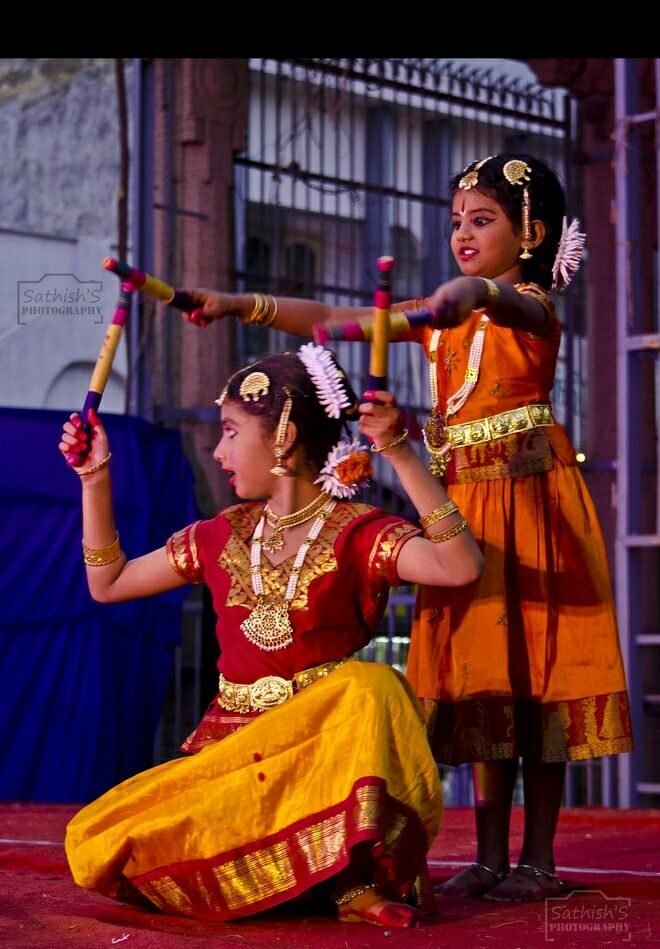
Tribal Dance Forms
The tribes living in the hilly areas have also contributed to the richness of the state’s culture. Tribal dance forms are an inherent and significant part of Andhra Pradesh’s culture. Some famous tribal dance forms of the state are:
- Dhimsa
- Lambadi
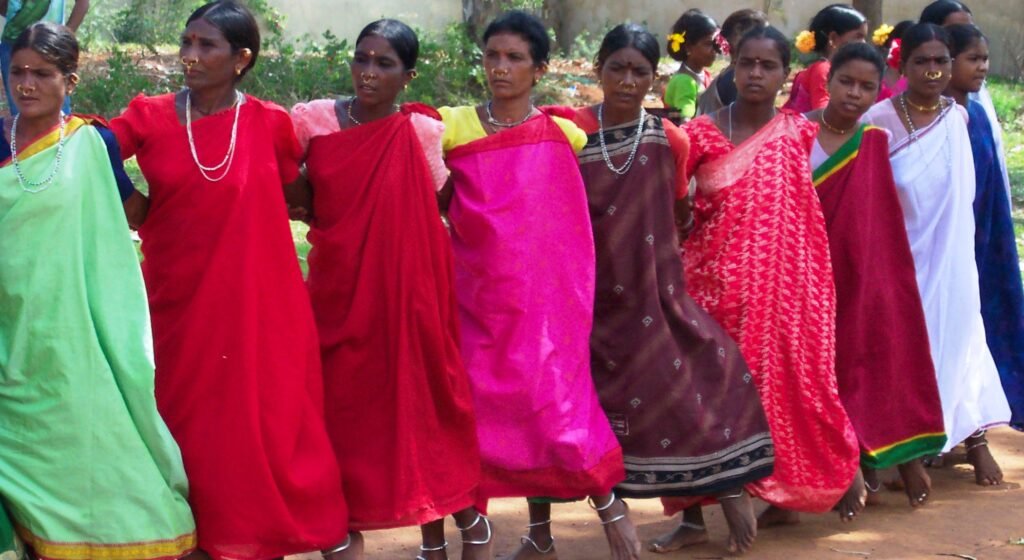
Dhimsa
Dhimsa is a tribal dance form prevailing in the Araku Valley of the Visakhapatnam district. This dance form is performed by the Valmikis, Konds, and Bagatas tribes living in this region. This dance form is performed in local fairs and festivals.
Dhimsa is performed by 15 to 20 women, forming a chain by holding hands together and moving in a snake-like formation. The male performers assist the female dancers by playing instruments such as Dappu, Mori, Tudumu, Kirindi, etc.
Dancers wear saree and ornaments in typical tribal fashion and wear their hair in a single-sided bun, sporting colourful flowers. This dance form is highly entertaining for the audience.
Lambadi
Lambadi is the tribal dance form of the Banjaras/Lambadi community, originating in the Anupu Village. The Lambadis are a semi-nomadic tribe that keeps moving from one place to another. This dance form has its roots in Rajasthan. The dress and the jewellery worn by the dancers are similar to the Rajasthani traditions.
Lambadi dance is performed by 15 to 20 women, while the male performers assist dancers with instruments. Dappu is the main instrument played rhythmically. Women dance and sing songs in a mixture of Telugu, Hindi, and Marathi languages. Dancers wear blouses and long skirts with heavy mirrors and beadworks, sporting heavy ivory bangles and brass anklets.

The following is a list of delicious Andhra recipes you cannot miss on your next trip to the regal streets of Hyderabad, tranquil beaches of Vizag, serene Araku Valley or the soul-searching Tirupati temple.
1. Kodi Pulao:
The perfect spicy blend of rice and meat is a treat for the meat-lovers. You absolutely cannot miss this meaty delight before checking into an hourly hotel in Banjara Hills to retire for the day.


2. Royyala Yeppadu:
This spicy fried prawn curry is a delicious treat for all the sea-food lovers. After all, who does not love the spicy crunchy prawns?
3. Pulasa Pulusu:
This extremely rare seasonal fish curry is very healthy too. If you visit the coasts of Andhra Pradesh during the right season, do not forget to feast on a plate of the delicious curry. So, when you relax in a beach in Vishakhapatnam, remember to have a feast with Pulasa Pulusu.


4. Gutti Vankaya Kura:
The spicy stuffed eggplant curry is a mouth-watering delicious dish with the roasted herbs adding a rich flavor and aroma to the delightful delight. So, as you explore the beautiful city of Vijayawada, lunch on a sumptuous meal of Gutti Vankaya Kura with rice.
5. Gongura Pachadi:
Andhra cuisine is incomplete without the myriad variety of pachadis or chutneys. One of the most unique types is the spinach pachadi. The unique flavor will fill your senses and leave you craving for more. The chutney has a tangier pickle version cooked with sorrel leaves. I am very sure that after tasting it once you would be dying to know the secret recipe and prepare your own version at home. When you order a meal in Hyderabad, remember to order for Gonguro Pachadi along.

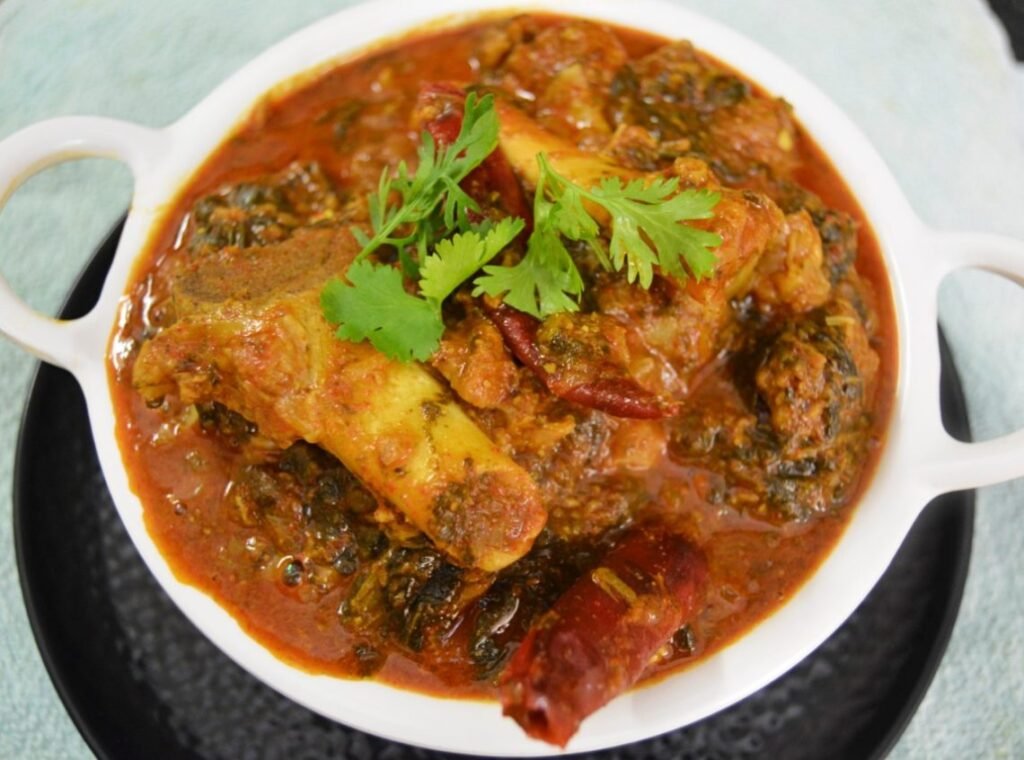
6. Gonguro Mutton:
Andhra cuisine has a variety of meat preparations. All of them are very delicious. But, gonguro mutton deserves special mention. This delicious dish prepared with spinach has a unique spicy aroma and flavor, which is difficult to be found otherwise or elsewhere. The addition of potatoes and coconut milk enhance the taste and texture of the delicious gravy.
7. Natu Kodi Pulusu:
Amongst a variety of spicy chicken recipes, the Natu Kodi Pulusu certainly stands out. The pepper chicken and Guntur chicken are mouth-wateringly delicious, but the chicken cooked with poppy seeds is very tasty. The poppy seeds add a rich aroma, flavor and texture to the rich and tangy taste of other pickles. You would definitely fall in love with the variety. Besides sight-seeing, have a blast in the city of Guntur with Natu Kodi Pulusu in an hourly couple friendly hotel in Guntur.

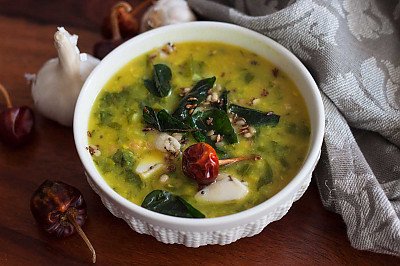
8. Akura Pappu:
Andhra cuisine loves spinach. Another delicious recipe of Popeye’s favourite leafy vegetable is the Akaru Pappu. The dish prepared with pulses would surely make even children love their veggies. So, when you visit the holy city of Tirupati, lunch on delicious Akura Pappu with rice and rest in an hourly couple friendly hotel in Tirupati.
9. Ulava Charu:
Ulava means horse gram. The horse gram soup deserves special mention for the delicious creamy spicy taste. It is definitely a treat for our palette.
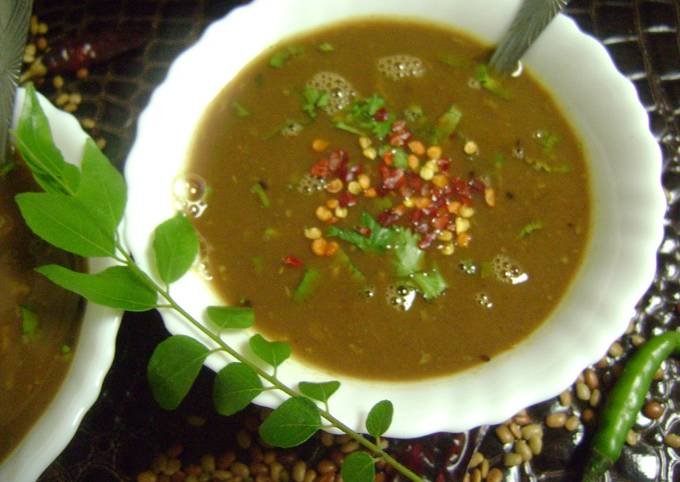
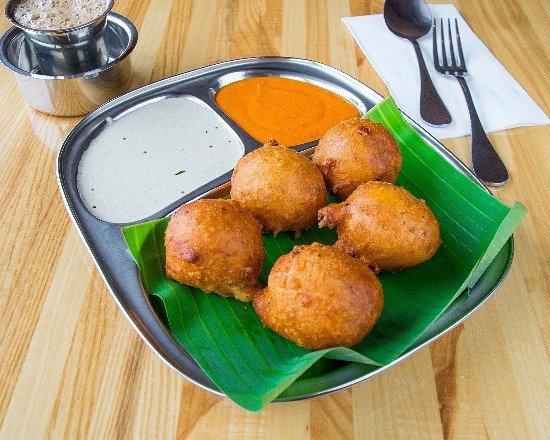
10. Punugulu:
The deep fried idli batter is a delectable crunchy snack. You can also eat it as an appetizer or as a side-dish during a meal. Nevertheless, you cannot miss this delicious food item.
11. Dondakaya Fry:
The stir fried ivy gourd is healthy and tasty. The nuts added in the preparation enhance the flavor and make a crispy delight. It is exceedingly healthy as well because it helps to detox the body.


12. Crispy Bhindi:
Besides gourds, lady’s finger is also stir fried with a variety of spices. The taste has no bounds and is loved by one and all. You must definitely visit an authentic Andhra restaurant to munch into the crispy delights with rice and pulses.
13. Panasa Puttu Koora:
Jack-fruit is a delicious fruit after it becomes ripe. But, did you know that the unripe fruit can also be very tasty? Yes! Andhra cuisine has a magical recipe of the unripe jackfruit in its sleeves. The raw fruit is marinated properly with spices and cooked into a delicious curry. Due to the adequate marination, the taste of the masala seeps deep inside each fruit particle. Hence, there is a burst of flavours with each bite.


14. Boorelu:
The sweet rice dumplings are filled with coconut and pulses mixture. The mixture is sweet as well. This favourite sweet is prepared during every Telugu religious festival and found is almost every sweet shop.
15. Pootharekulu:
Popularly known as paper sweet, the delicious sweet dish is prepared with rice flour and ghee. The thin rice flour layers are layered against each other with jagerry and spices like cardamom and elaichi.

Plan Your next trip
Recommended Tour Options For Andhra Pradesh

Spiritual Tirupati

Splendid Hyderabad


